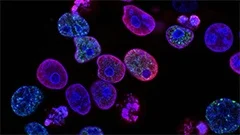Introduction
Prokaryotes, also known as bacteria and archaea, are unicellular organisms that lack a true nucleus and other membrane-bound organelles typical of eukaryotic cells. The cellular organization of prokaryotes is distinctly different from that of eukaryotes due to the absence of a complex internal structure. This course aims to provide an in-depth understanding of the cellular organization of prokaryotes, focusing on their unique characteristics and differences from eukaryotic cells.
Prokaryote Cell Structure
The Bacterial Cell
Introduction to Bacteria
Bacteria are a large and diverse group of single-celled organisms that inhabit almost every environment on Earth. They have an extraordinary ability to adapt to various conditions, making them crucial for maintaining ecological balance.
Bacterial Cell Wall
The bacterial cell wall is the primary structural component of the bacterial cell. It provides rigidity and protection against osmotic pressure. The main components of the cell wall are peptidoglycan, teichoic acids, and lipoteichoic acids. Bacteria can be classified into three major groups based on their cell walls: gram-positive, gram-negative, and mycoplasma.
Bacterial Plasma Membrane
The plasma membrane of bacteria is similar to that of eukaryotic cells in terms of its role in maintaining the integrity of the cell, controlling the movement of substances across the membrane, and participating in various metabolic processes. It consists of a phospholipid bilayer with embedded proteins and carbohydrates.
The Nucleoid Region
The nucleoid region is where bacterial DNA resides but does not form a discrete nucleus like in eukaryotes. The nucleoid is usually found near the center of the cell, although its location can vary depending on the species and growth conditions.
The Archaeal Cell
Introduction to Archaea
Archaea are a separate domain of unicellular organisms that are closely related to bacteria but have evolved distinct characteristics to adapt to extreme environments such as high temperatures, salt concentrations, or acidity levels.
Archaeal Cell Wall and Membrane
The cell wall of archaea is less rigid than the bacterial cell wall and is made up of a complex polysaccharide called peptidoglycanans, which contains fewer cross-links compared to eubacteria. The plasma membrane of archaea is unique due to its ether-linked lipids instead of ester-linked ones found in bacteria and eukaryotes.
Archaeal Chromosome Organization
Archaeal chromosomes are organized differently from those of bacteria and eukaryotes. In archaea, the chromosome is circular and contains multiple origins of replication, allowing for bidirectional replication. Additionally, chromatin is not tightly packed like in eukaryotes, with the DNA remaining relatively accessible and loosely associated with histone-like proteins.
Comparison Between Prokaryotes and Eukaryotes
This section will provide an overview of the key differences between prokaryotic and eukaryotic cells based on their cellular organization.
Membrane Structure and Organization
Prokaryotes have a simpler membrane structure compared to eukaryotes, with no intracellular organelles enclosed by separate membranes. The plasma membrane of prokaryotes is also continuous with the outer cell wall, whereas in eukaryotes, the plasma membrane forms a distinct boundary between the cytoplasm and external environment.
DNA Organization and Replication
Eukaryotic cells have a true nucleus that houses the majority of the genetic material, while prokaryotic cells do not have a defined nucleus. Prokaryotic chromosomes are circular and lack histones, whereas eukaryotic chromatin is linear and tightly packaged around histone proteins. The replication process also differs between prokaryotes and eukaryotes, with eukaryotes utilizing more complex machinery for chromosome duplication.
Cell Division and Growth
The processes of cell division and growth differ significantly between prokaryotes and eukaryotes as well. Bacteria undergo binary fission, in which the cytoplasm is divided into two equal parts by a septum, forming two identical daughter cells. In contrast, eukaryotic cells go through mitosis or meiosis to produce new cells.
Conclusion
The cellular organization of prokaryotes, particularly bacteria and archaea, provides valuable insights into the evolution and diversity of life on Earth. By understanding their unique characteristics and differences from eukaryotes, we can appreciate the complexity and adaptability of these simple organisms. Furthermore, knowledge about prokaryotic cells is essential for addressing numerous biological challenges, such as antibiotic resistance and biotechnology applications.
MCQ: Test your knowledge!
Do you think you know everything about this course? Don't fall into the traps, train with MCQs! eBiologie has hundreds of questions to help you master this subject.
These courses might interest you
Create a free account to receive courses, MCQs, and advice to succeed in your studies!
eBiologie offers several eBooks containing MCQ series (5 booklets available free for each subscriber).



